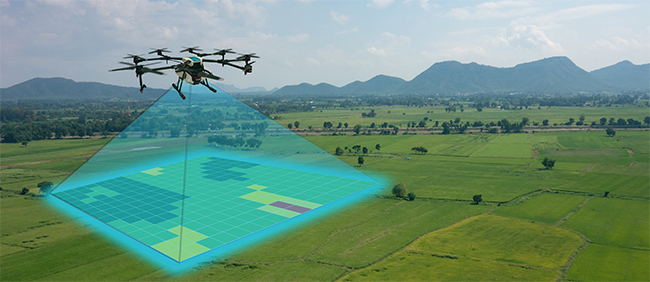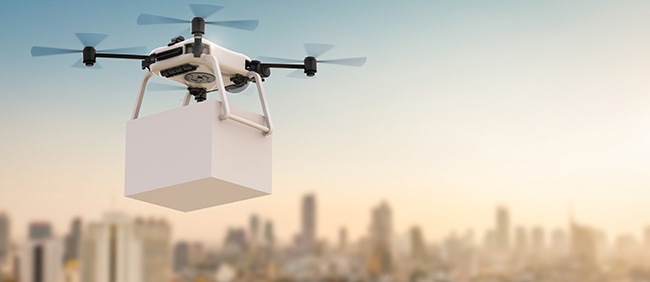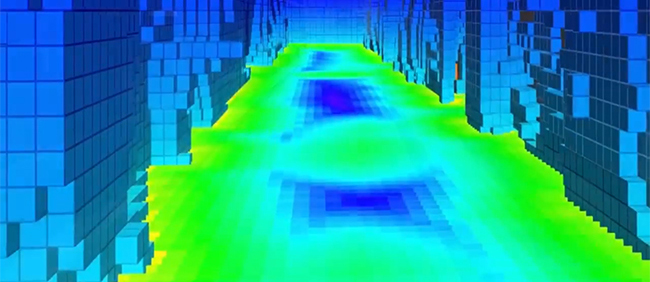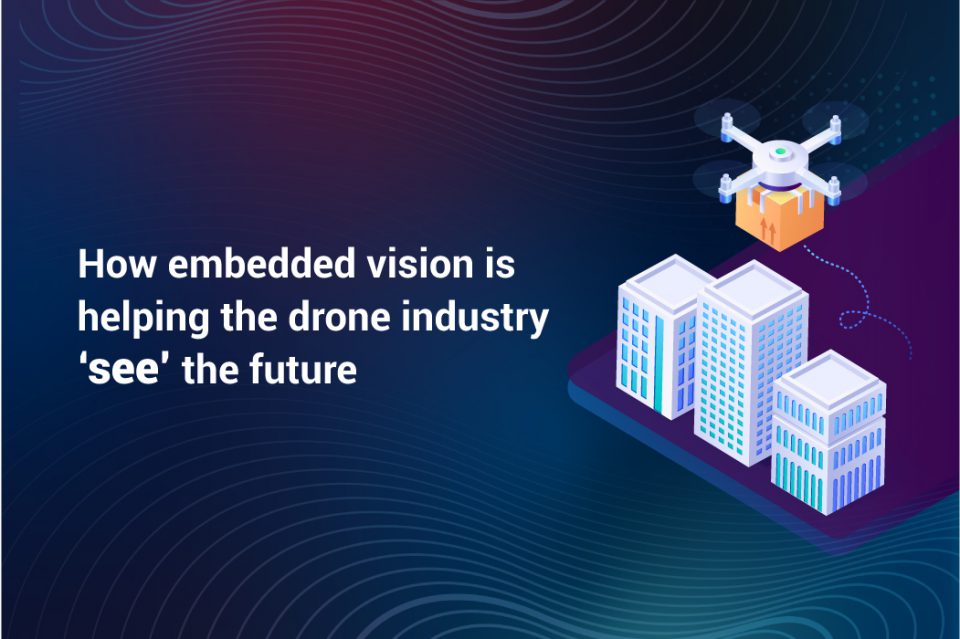Robotics has paved the way for the emergence of many cutting-edge vision-based applications across various sectors like retail, smart farming, warehousing, etc. In particular, one subset of the robotics industry that has taken the world by storm is drones. Though drones are seen as a completely different type of device, in the sense that they operate autonomously and carry out various tasks on their own, they can be classified under robots.
For the drone technology to evolve, all the associated technologies also had to advance, one of which is called embedded vision or camera technology. e-con Systems, being an innovative OEM Camera Solution Provider with close to two decades of experience in embedded vision, has developed a deep understanding of how and what type of cameras help drones enhance their performance.
The remarkable rise of drone technology
Mobile robots that move on land are AMR (Autonomous Mobile Robot), AGV (Automated Guided Vehicle), and so on. While such robots have been changing the game for many industries, those in the air, referred to as drones, have taken embedded vision innovation one step further.
Drones come in many shapes and forms. Based on their operating principle, they can be classified as fixed-wing aircraft and multirotor aircraft. Irrespective of their shape and form, drones must be equipped with advanced vision capability to perform functions that demand convenience, speed, and a great deal of accuracy. From agriculture to construction and mining, the number of use cases of drones is endless. And there are new use cases emerging every day with drones used for inspection, delivery, object detection, etc.
What are the primary use cases of drones?
Agriculture

In the agricultural sector, drones are used for multiple purposes – from basic tasks like spraying pesticides to more complex ones like monitoring plant growth at regular levels to identify when they are ready for harvesting. Other than crop monitoring, livestock monitoring is also a prominent use case since both applications would be expected to monitor a large area of land. Traditionally, it required a lot of manual labor.
However, given that drones fly high above the ground – they can be used for monitoring plants, trees, cattle, etc. Some of the major camera features required for an agricultural drone are:
High pixel count: The higher the camera’s image resolution, the better would be the application’s ability to see minute details clearly. For instance, in case the drone is used to detect crop diseases, its camera should be able to identify granular symptoms – hence, requiring a higher pixel count. In such applications, a high resolution camera is highly recommended.
Zoom – optical vs. digital: As drones fly at a distance from the objects, their ability to zoom into the image on the fly to see minute details is extremely helpful. To achieve this, they either leverage optical zoom or digital zoom. In most cases, optical zoom is advantageous. In certain applications, though, a digital zoom camera can be more suitable since they tend to offer a better performance to price ratio.
NIR imaging capability: Capturing NIR (Near-Infrared) images is a common expectation of drones since they are used to calculate the vegetation index. Therefore, the camera’s sensitivity to NIR spectrum can prove to be beneficial. An NIR camera with high quantum efficiency needs to be chosen for this.
Construction

Drones are a perfect fit in the construction sector since they can reach places that humans are either unable to or require a high skill level. For example, in places like oil rigs or high-rise building construction sites, many precautionary steps need to be taken to ensure the safety of the human workforce. But with drones, such risks can be easily alleviated. The major camera features in this use case are:
High-resolution & zoom: Similar to the previous use case, imaging in the construction sector requires a high resolution camera to ensure information accuracy. These images should also be zoomed in for detailed inspection, which requires the camera solution equipped with the zoom feature.
HDR (High Dynamic Range): Now, in agricultural drones – the camera is generally pointed downwards toward the ground. But in construction drones, the cameras are pointed towards the horizon at different angles. It really depends on the height of the building. This creates significant image glare when the sun or other reflective materials such as glass and metal are in the scene.
This leads to hotspots or whitewashed images, and the details in the scene may be lost. So, a camera with a High Dynamic Range helps produce images of the scene with superior details. HDR cameras can capture images without fail even when they are facing a bright light source.
Mining
As you may be aware, mining caves can be dangerous for human beings to traverse due to the lack of oxygen, the presence of poisonous gases and limited to no lighting. But it also means that drones used in mining applications must be able to cope with the lack of visibility, considering the low-light environment. So, the most important camera feature is:
High sensitivity to IR/visible light: The camera must come with high sensitivity to light so that it can capture images with a satisfactory level of detail – using only low-power LEDs for IR illumination. Otherwise, high-power LEDs need to be used on the drone, which drastically reduces the drone’s flight time. So, for drones used in mines, an NIR camera with low light performance is recommended.
General drones

One of the highly sought-after drone features is autonomy. The ability to fly autonomously with little human intervention saves a lot of time and reduces crashes caused by human error. So, advanced drones are expected to intelligently sense their surroundings. One or multiple cameras should be used to provide depth and orientation measurements in real-time. And it’s crucial for these drones to leverage cutting-edge techniques like simultaneous localization and mapping (SLAMO algorithms) to detect their immediate surroundings.
Other options are to use a global shutter multi-camera solution to offer surround view capability with zero rolling shutter artifact. The global shutter camera must also have support for fast shutter speeds to avoid motion blur.
e-con Systems offers state-of-the-art cameras for drone applications
e-con Systems has designed and deployed several cameras that can be integrated into embedded platforms like the NVIDIA Jetson series and the NXP i.MX8 series. These edge computing platforms can process the video feeds from the cameras and make intelligent decisions at the edge. Following is the comprehensive list of e-con cameras suitable for different types of drones:
- STEEReoCAM – stereo depth camera capable of providing HD depth resolution @ 30 fps
- e-CAM180_CUMI1820_MOD – 18MP MIPI camera module for NVIDIA Jetson AGX Xavier, Xavier NX, and FLOYD carrier board
- See3AM_CU135 – 13MP high resolution USB camera with IR sensitivity
- IMX485 based camera with highly sensitive pixels and 8 MP resolution
- See3CAM_24CUG – 2MP global shutter USB camera capable of supporting 120fps
- e-CAM217_CUMI0234_MOD – 2MP global shutter camera module
Looking for the right camera solution for your specific drone use case?
Please write to camerasolutions@e-consystems.com for a free consultation with our imaging experts.

Gomathi Sankar is a camera expert with 15+ years of experience in embedded product design, camera solutioning, and product development. In e-con Systems, he has built numerous camera solutions for robots, industrial handhelds, quality inspection systems, smart city applications, industrial safety systems, and more. He has played an integral part in helping hundreds of customers build their dream products by integrating the right vision technology into them.




